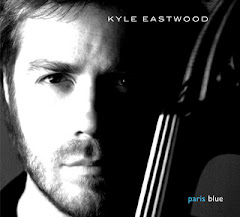Shadows of Ella, hints of Evans, and all the things Tony
Bennett is
Last fall, Tony Bennett released a fantastic vocal jazz
record together with Lady Gaga, Cheek to Cheek. In an interview with the Wall
Street Journal, Lady Gaga said that she loved working with Tony Bennett, loved
jazz, and that she planned to record “one jazz record a year, forever”. One
year to the day later, Lady Gaga’s next jazz album is nowhere in sight. Instead,
we have Tony Bennett, the octogenarian king of jazz, who basically reinvented
the concept of the duet with his two duets albums, stretched that work with a
pop diva, and now, much in the mold of his inimitable work with Bill Evans many
years ago, we find him paired with one of today’s premier jazz pianists, Bill
Charlap. And, as Tony has become one of the defining masters of the American
songbook, he stays close to home by taking on a number of standards by Jerome
Kern. The result is an eminently listenable, fascinating jazz record.
One big difference between this Bennett-Charlap recording
and the Bennett-Evans recordings is that this time, they went ahead and used a
full rhythm section on a number of the songs. With Peter Washington on bass and
Kenny Washington on drums, the sound has more of a club atmosphere and less of
the intimacy of the pure duets with Evans. Another difference is Bill calls in
his life partner and fellow jazz pianist Renee Rosnes to do some fabulous piano
duet work on four of the tunes. (As a jazz pianist, those tunes really stood
out for me.) Throughout, the solos of Charlap tend to be more evenly
constructed and hone closer to the original songs, especially so as each song
is kept (for the most part) close to or under the classic three minutes twenty
seconds time frame. The selection of songs is solid and includes all the
“standard” standards: Yesterdays, All the Things You Are, The Song is You, and
even I Won’t Dance, which Tony may have done simply because it was still fresh in
his repertoire from last year’s Lady Gaga recording.
 |
| "Benedetto" is Tony's real name. Yes, this is his sketch. |
Tony sounds great, and the recording is very clean. (It
was produced by Tony’s son, Dae Bennett and Bill Charlap, with another son,
Danny Bennett, as executive producer.) Charlap is absolutely on top of his game
here, carrying each tune along until it’s time to solo, cleverly breaking and
shifting the solo while keeping the feel, then throwing it underhand back to
Tony so Bennett can knock it out to the finish. It’s a formula that Tony has
stuck with for five decades, and I personally am glad that he decided to not
try and change it up. The CD booklet includes full liner notes and a nice
background essay/exposition by WSJ columnist and jazz writer Will Friedwald.
There are plenty of calm photos and a portrait of Jerome Kern to fill out the
booklet.
 |
| One of the best albums to come out last year. |
I don’t know how much longer Tony is going to be with us,
but I hope it’s a long time and I hope he keeps singing, because treasures like
this five star vocal jazz album are few and far between. Maybe he will do like
Ella did with Norman Granz and work through some of the songbooks of some of
the other great American composers. And if he keeps Charlap, his trio and
Rosnes along for the ride, there will be lots more great music to come.
I’ll also keep my eyes open for that next Lady Gaga
record, while I’m monitoring the airwaves.







